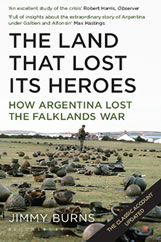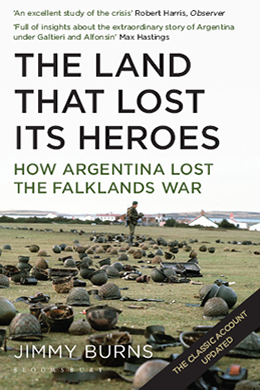“Of the several rallies that took place during the war one in particular seemed to bring ritual to a climax. On 10 April, 1982, the US administration’s Alexander Haig was preparing to make his way to the Argentine presidential palace to present the first serious peace proposals along the one mile route leading to it from the Foreign Ministry’s Palacio de San Martin. As he came out on to the street and began motoring across the city he found that most of the route and the whole of the Plaza de Mayo was garlanded with loudspeakers. The sound being relayed was a mixture of martial music, slogans about unity and war, and an insistent rallying call to all Sargentines of whatever political, social or religious background to demonstrate their patriotic spirit to Mr (General) Haig. The square was packed – most news reports agreed that there were nearly 300,000 people, the biggest demonstration since the days of Peron. British and American flags were burnt and their ashes merged in a sea of blue and white- the Argentine national colours. Inside the crowd some groups tentatively voiced their disrespect for the military regime, but for most of the time they were drowned by a collective chant of ‘Argentina, Argentina, Argentina‘. The suppression of individuality was matched in its intensity by the eradication of cultural identity. There could have been no better symbol of this than one poster held up by a Japanese immigrant, ‘We have Japanese faces, but we have Argentine hearts.”
Have you read this book?

This is the book the late Graham Greene managed to read in manuscript form on his way to Moscow to visit his old friend Kim Philby. Greene – always generous with young aspiring authors – subsequently wrote to me saying: “You can quote me as saying this is a required book for anyone who wishes to understand the Argentine situation before and after the Falklands War.’

